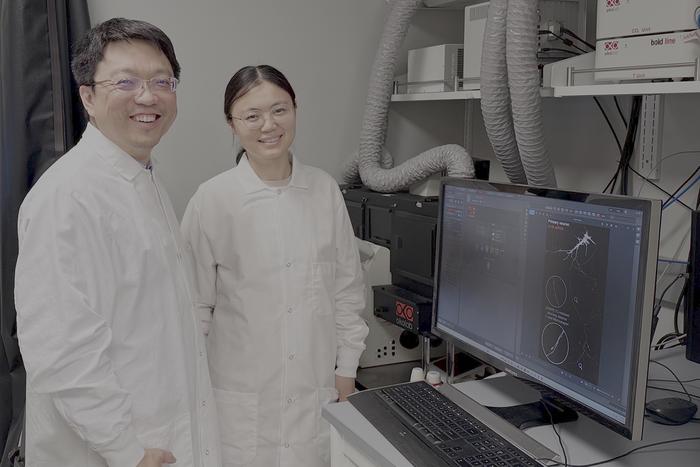Researchers at Stanford University have unveiled a groundbreaking technology that might redefine the treatment of neurological disorders by enhancing the delivery of RNA molecules to specific locations within neurons. This novel approach, termed "spatial RNA medicine," could promise revolutionary therapeutic advancements for conditions like amyotrophic lateral sclerosis (ALS) and spinal muscular atrophy, as well as for injuries to the spinal cord. The new technique focuses on rectifying a significant challenge faced in neurobiology: delivering essential RNA to damaged areas within cells, which is crucial for cellular repair and regeneration.
RNA serves as the intermediary between DNA and protein synthesis, playing a critical role in cellular function and repair. Under normal circumstances, when a neuron sustains injury, RNA mobilizes proteins necessary for recovery. However, the efficiency of this rescue operation diminishes in the case of neurological disorders or after traumatic injuries, leading to irreversible cellular damage. The ability to harness RNA’s capabilities effectively and direct them appropriately represents a pivotal shift in the approach toward treating complex neurological conditions.
The leading researcher, Stanley Qi, who serves as an associate professor of bioengineering at Stanford, describes the innovation as a seminal moment in neuroscience. The technology utilizes a refined version of CRISPR technology—specifically, the CRISPR-Cas13 system, which has been repurposed not for editing genetic material directly but for maneuvering RNA within the cellular landscape. This adaptation signifies an important evolution in the application of CRISPR, emphasizing precision and specificity by facilitating the transportation of RNA rather than simply altering genetic codes.
As Qi elucidates, the targeted delivery of RNA within neurons serves much like a postal system. The researchers have ingeniously engineered Cas13, which typically functions to cleave RNA, to act instead as a "mailman," effectively relocating RNA to designated sites within the cell. This elegant method allows for precise adjustments to cellular processes, potentially fostering effective cellular repair mechanisms following injuries.
The crux of CRISPR-TO technology lies in the incorporation of localization signals—akin to addressing envelopes—that instruct Cas13 on where to deliver RNA. By employing a diverse array of signaling molecules, researchers can direct RNA to various cellular compartments, providing an unprecedented degree of control over RNA delivery. This customization opens vast possibilities for therapeutic applications, enabling targeted treatment of specific kinds of neuronal damage or decay.
The results of initial trials demonstrate promise, with the technology applied to mouse brain neurons in vitro. During these experiments, CRISPR-TO transported specific RNA molecules to the distal tips of neurites—structures that extend from neurons and form synapses. One particularly effective RNA molecule was shown to enhance neurite growth by up to 50% within a mere 24 hours. This finding emphasizes the potential of CRISPR-TO to foster regeneration and rehabilitation of damaged neurons.
The implications of such advancements are profound. Neurological diseases often result from the inability of neurons to cope with stressors such as aging, injury, or genetic mutations that disrupt RNA transport mechanisms. By re-establishing the proper transport and localization of RNA, researchers hope to unlock new avenues for restoring neuronal function and promoting healing.
Continuing their work, Qi and his team are committed to exploring additional RNA candidates that might serve as effective agents for neuronal repair. As a part of their ongoing research, they are investigating both endogenous (naturally occurring) and synthetic RNA molecules to ascertain which combinations yield the most significant therapeutic effects. This quest for knowledge aims to pave the way for innovative treatments that could bring relief to patients suffering from debilitating conditions such as ALS and spinal cord injuries.
As they delve deeper into the intricacies of spatial RNA organization and its impacts on brain repair, the team aspires to uncover the RNA players that will hold the key to developing better therapeutic strategies. The challenge remains not just to deliver RNA but to ensure it reaches the precise location and functions effectively within the cellular microenvironment.
With CRISPR-TO technology, the landscape of RNA therapeutics seems set to transform. Researchers envisage newfound methodologies that will guide RNA medicines to specific cells within the body, thereby enhancing their safety and efficacy. The conversation around RNA delivery systems is evolving, and the breakthrough at Stanford signifies a critical step toward novel therapeutic alternatives for various neurological conditions.
The questions that linger now concern the future applications of this research. Could CRISPR-TO’s precision lead to tailored treatments for other cellular dysfunctions across different organ systems? Will the insights gained from manipulating RNA localization alter our understanding of cellular repair processes? As the team continues to explore these avenues, the scientific community watches with eager anticipation, hopeful that spatial RNA medicine may soon become a cornerstone in the treatment of chronic and progressive diseases.
As they move forward, the researchers are optimistic. Qi believes that with this technology, the ultimate goal is not merely to introduce RNA into cells but strategically position it for maximum therapeutic impact. The connection between location, timing, and functional efficacy becomes clear as the researchers aim to forge a new path toward healing and rehabilitation in neuroscience.
Through the unique lens of CRISPR-TO, the researchers at Stanford are poised to lead the charge in understanding neuron biology and regenerative medicine, ultimately making strides toward therapies that could change lives. The journey of this innovative technology has only just begun, yet its potential promises to illuminate dark corners of neurodegeneration and injury that have long resisted effective treatment.
Subject of Research: Transportation of RNA molecules within neurons for therapeutic applications
Article Title: Spatial RNA Medicine Enhances Neuronal Repair Through Targeted RNA Delivery
News Publication Date: October 2023
Web References: Nature Article
References: Qi, S., & Han, M. (2025). Clonal tracing with somatic epimutations reveals dynamics of blood ageing. Nature.
Image Credits: Stanley Qi lab
Keywords
CRISPR, RNA, neuron repair, neurodegenerative diseases, spatial RNA medicine, ALS, spinal cord injuries.




